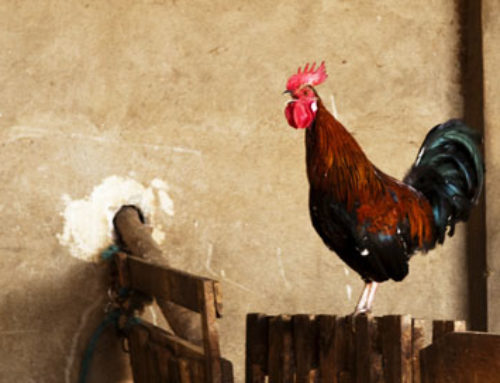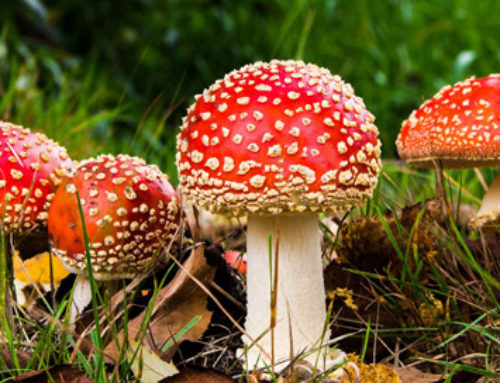 Every month the Oldways Whole Grains Council features a different whole grain. August’s grain is rye, a hardy crop, which for a long time was considered a weed competing for wheat in the fields. This fast-growing, resilient grain gained extensive usage in the Bronze Age (c 1800-1500 BCE) spreading from localized use around Turkey to most of Europe.1 Slightly sour and earthy tasting, it was a frequent addition to the peasant’s table; while its less nutritious cousin wheat sat upon the plates of the gentry.
Every month the Oldways Whole Grains Council features a different whole grain. August’s grain is rye, a hardy crop, which for a long time was considered a weed competing for wheat in the fields. This fast-growing, resilient grain gained extensive usage in the Bronze Age (c 1800-1500 BCE) spreading from localized use around Turkey to most of Europe.1 Slightly sour and earthy tasting, it was a frequent addition to the peasant’s table; while its less nutritious cousin wheat sat upon the plates of the gentry.
Here are a few superstitions and traditions surrounding rye:
Wheat degenerates into rye; the plant spontaneously becoming a different species.2

In the Netherlands, if you find a full grain of rye in your bread on three consecutive Fridays, the first eligible person you encounter will be your future spouse.
 Back at the origins of this superstition, finding a whole piece of rye was a rarity. Now with the whole grain craze, all you need to do is pick up a loaf each week. Just be sure to carefully choose when you consume it on that third Friday.
Back at the origins of this superstition, finding a whole piece of rye was a rarity. Now with the whole grain craze, all you need to do is pick up a loaf each week. Just be sure to carefully choose when you consume it on that third Friday.
Finally for all the rye farmers out there, be sure to leave the last sheaf of rye uncut in the field for the malevolent creature known as the rye wolf or Roggenwolf. The Roggenwolf is a ferocious wolf demon, often likened to a werewolf. Blamed for a variety of sins including ambushing peasants to strangle them, kidnapping children, and destroying the crop in the field it calls home, the Roggenwolf is only one in a family of grain-spirits with wolf form.3
 Ergot is also attributed to this grain-linked supernatural wolf, and from this association it has the nickname “wolf tooth.” The hallucinogenic fungus has a colorful and controversial history and has been disputedly linked to numerous historical events including the Great Fear4 in France and the Salem witch trials.5
Ergot is also attributed to this grain-linked supernatural wolf, and from this association it has the nickname “wolf tooth.” The hallucinogenic fungus has a colorful and controversial history and has been disputedly linked to numerous historical events including the Great Fear4 in France and the Salem witch trials.5
To stop asphyxiating ambushes or ergot-rot gather your friends in their Sunday-best and perform a harvest rite known as Vergondendeel. Bind the grain, referred to as the “wolf”, with variegated ribbon to trap its malevolence. Then leap over it and dance around it (ritualistically of course) before allowing the primary reaper to cut it away with his scythe. The “wolf” grain can then be placed with the previously harvested rye, and your fields will be safe.
Footnotes
1. Rye’s (Secale cereale) history is unique compared to most other widely consumed grains. Most grains had very early domestication with wide-spread use quickly following. Rye on the other hand was domesticated in Turkey but then disappeared from the archaeological record until it reemerged during the Bronze Age and spread through Europe.↩
2. There is a curious persistence in the belief of grains degenerating into other grains. Ancient writers, Pliny and Thomas Aquinas among them, frequently recorded grains spontaneously metamorphosing into other grains. Pliny remarked that wheat and barley could degenerate into oats. Aquinas stated that rye was an appropriate substitute for wheat in creating the Eucharist because wheat degenerates into rye so they are one and the same. In the nineteenth century a crop known as “cheat” (Bromus secalinus) was recorded as a degenerate of rye, and in some areas of Europe this belief still lingers. However, don’t discount spontaneous changes in crop structure entirely. Studies have proven that grains have changed their appearance due to an abnormal division in meiosis, when spores for reproduction are created. This results in an extra chromosome in some offspring giving them an appearance more akin to their wild cousins.↩
3. When I read about the Roggenwolf, I envisioned a darkened field where iridescent eyes peer from the wavy depths. The wolf slipped from the shadows, its coat a mix of fur and the wispy grains it hides in. The image was strikingly similar to the scrunt in Lady in the Water by M. Night Shyamalan. I haven’t seen the move in years, but the dark, fairytale-like story struck a chord more strongly than I realized since the mention of a grassy field and a wolf was enough to re-evoke the memory.↩
4. The Great Fear was a period of panic at the start of the French Revolution where peasants armed themselves and rioted against the aristocracy. One of the underlying causes was a worsening grain shortage that lead to rumors of nobles trying to starve the population. Mary K. Matossian argued that this widespread panic, lasting from the seventeenth of July to the third of August in 1789, was due in part to ergot-poisoning from eating tainted rye. The shortage would have meant substandard grain would have been consumed to prevent starvation, and the fears of the populace became heightened beyond reason due to the effects of ergotism. However, other socio-political factor could have been the sole cause of this period of upheaval.↩
5. The Salem witch trials resulted in the execution of twenty people accused of witchcraft in colonial Massachusetts between February 1692 and May 1693. Linnda R. Caporael, a professor at the Science and Technology Studies Department at Rensselaer Polytechnic Institute, argued that ergot-poisoning could have been to blame for the panic that lead to this series of trials, but her conclusions were disputed by Jack Gottlieb and Nicholas P. Spanos after careful review of the historical and medical records from the trial. Matossian published a paper indicating markers for the potential ergot-poisoning in opposition to Spanos and Gottlieb but did not provide conclusive support for Caporael’s theory. Evidence is too insubstantial to draw a clear conclusion.↩
Sources
“Rye + Tricalate.” Oldways Whole Grain Council. Date accessed August 21,2016.
Olsen, A et al. “Healthy Aspects of the Nordic Diet Are Related to Lower Total Mortality.” Journal of Nutrition. vol. 141, no. 4. April 1, 2011. pg 639-644. Date accessed August 21,2016.
Oostenbrink, Willem Tjebbe. “Superstitions.” Falcor I.C.Y. Date accessed August 21,2016.
Arber, Agnes. The Gramineae: A Study of Cereal, Bamboo and Grass. Cambridge University Press. Sep 30, 2010. pg 15-18.
Zohary, Daniel, et al. Domestication of Plants in the Old World: The origin and spread of domesticated plants in Southwest Asia, Europe, and the Mediterranean Basin, Fourth Edition. Oxford University Press. May 4, 2012. pg 62-66.
Thorpe, Benjamin. Northern Mythology, Comprising the Principal Popular Traditions and Superstitions of Scandinavia, North Germany and The Netherlands: Volume 1. Edward Lumley. January 1, 1851.
Caporael, Linnda. “Ergotism: The Satan Loosed in Salem?” Science 192, no. 4234. 1976. pg 21-26. Date accessed August 21, 2016.
Spanos, Nicholas and Jack Gottlieb, “Ergotism and the Salem Village Witch Trials,” Science 194, no. 4272. 1976. pg 1390-1394. Date accessed August 21, 2016.
Matossian, Mary Kilbourne. Poisons of the past: molds, epidemics, and history. Yale University Press. 1989. pg 81-86.
Photo Credits
Main Image: Rye Loaf by E.M.A. Timar
Oldways Grain Council- August Month of Rye Logo
Combined Images: Wheat by Robii & Rye by U. Leone
Rye Bread by E.M.A. Timar
Roggenwolf- Bartensleben Heraldric Shield by






Neat post. Like the superstitions mixed with facts. Thanks.